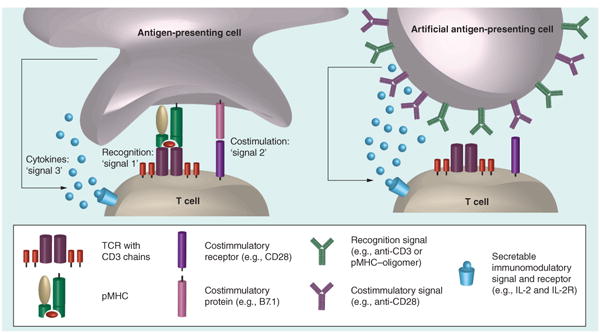Figure 1. A biological antigen-presenting cell interacting with a T cell and an artificial antigen-presenting cell interacting with a T cell.

In the biological setting, the recognition signal (‘signal 1’) is provided by the interaction of pMHC with the TCR complex, composed of a TCR heterodimer and signaling CD3 chains. Costimulation (‘signal 2’) occurs through a variety of cell surface protein mediators; the B7.1–CD28 interaction is often used in artificial antigen-presenting cell constructs. T-cell fate is also determined classically by the cytokine milieu-sensed signal (‘signal 3’).
pMHC: Peptide in MHC; TCR: T-cell receptor.
